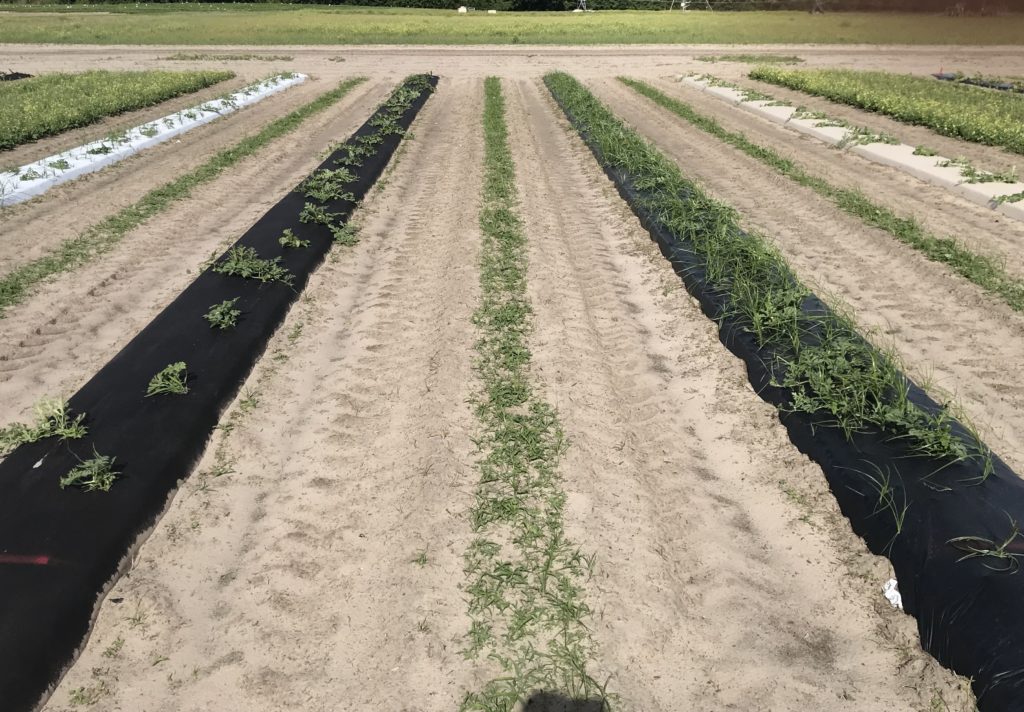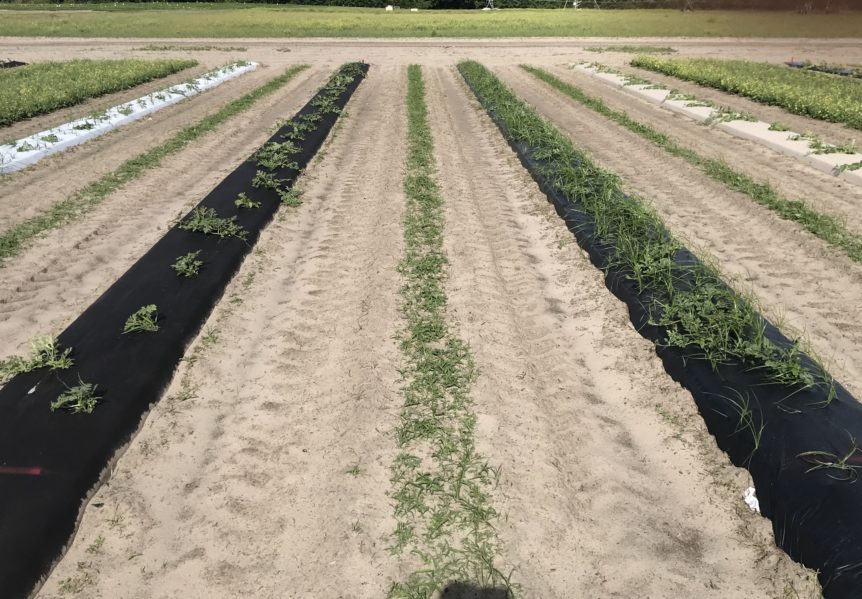
By Clint Thompson
Paper mulch is a management option that watermelon producers could be using in the near future.
While plastic mulch has long been utilized in vegetable production, paper mulch provides growers a more efficient and effective product to use during the season.
Bob Hochmuth, University of Florida Institute of Food and Agricultural Sciences (UF/IFAS) Regional Specialized Extension agent in Live Oak, Florida, spoke about paper mulches at the Suwanee Valley Watermelon Institute meeting in Fanning Springs, Florida, on Nov. 30. He emphasized its benefits which start with its ability to control nutsedge.
“Nutsedge will not come through the paper that we’re using with WestRock. The only place where nutsedge can come through is in the hole where we plant the watermelon transplant. That’s an incredible advancement, because we do not have really good control measures chemically for nutsedge in watermelons,” Hochmuth said.
Nutsedge Impact
UF/IFAS research in Florida showed that the presence of 25 yellow nutsedge plants per square meter (2.32 per square foot) in the watermelon bed throughout the season reduced yield by 98%, and six yellow nutsedge plants per square meter (0.56 per square foot) reduced yield by 20%.
“It’s a very difficult weed because it pokes through plastic just enough and it’s got a really sharp point on the leaves,” Hochmuth said. “It can be very competitive. In our research trials this past year, it’s certainly easy to expect in a heavy nutsedge population that you’re going to reduce yields, easily by one-third, maybe more, depending on how thick the population is. It’s a real serious pest.”
Paper mulch also does not degrade as quickly over time, and it is easier and quicker to apply before the season.
“We can lay the paper just about as fast as we lay the plastic. Its adaptability to our mulch-laying equipment is very good,” Hochmuth said.
Expensive Option
While it has yet to be applied commercially, costs are expected to be higher. It has to be coated to reduce degradation and it has to be painted black to get the warming benefits. But there’s little doubt this new technology will be used by watermelon producers sooner rather than later.
“This would pretty much on the commercial scale be brand new technology. We’ve had papers that have been available for gardeners and things like that in the past, but they have not been really well adapted to commercial use,” Hochmuth said. “When we put a roll of paper onto a big machine, a lot of times the paper was not strong enough to withstand that. Now, we do have papers that are transitioning from a research stage to an on-farm test stage. That’s where we are with the WestRock product.”










